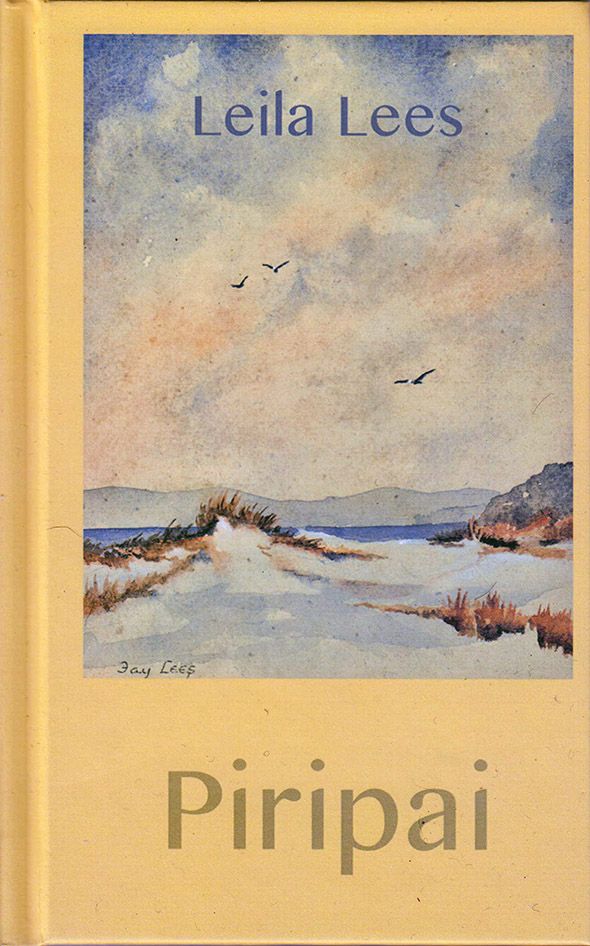Writing and art by Alex Stone
A gift: Piripai by Leila Lees
A delightful aspect of the manners of shags – generally considered not the most attractive of birds – is their courtship ritual that involves the sharing of ‘gift feathers’.
In the small gem of a book Piripai, an intimately-observed ‘natural history in prose poetry', Waiheke Island author Leila Lees has also given us a gift made up, in part, of feathers. For her chapters are all focused on a particular bird. But it is much more than this too; for in its structure and form, it is also an evocation of a lost world, a meditation of the profound beauty of the everyday that surrounds us, and so it becomes of universal value.
Piripai is a still-lonely stretch of land, held tight on a sand-dune spit between the Whakatane River and the Pacific Ocean, and bisected by dusty roads and a slow-moving canal. It could be considered featureless by an un-feeling, once-over observer. But to the girl who is the central character of the book – along with the birds she devotes each a chapter to – Piripai is a papakainga of richness, of mystery, of great and enduring worth. In the small part of it that has become developed as a beach suburb called Coastlands, it’s perhaps telling that the one current landmark is a place called Bespoke Flowers.
This is reflected in the name itself: ‘Piri’ means loyalty, to keep close to, allegiance. It’s also a defensive cloak, or a closely-woven protective fabric– the foundation of a cloak. And ‘pai’ – as we all know – is to like, to approve, to be safe and sound. There is much to like in this gorgeous wee book.
As for the birds, the girl records her observations and feelings with regard to a mix of endemic and exotic species, indicating an acceptance of the natural world as it is, as it finds itself now – and as the girl and the woman and the man and the brothers and the aunts found it then. There’s even a chapter devoted to mynahs. Though they are characterised in diverse ways – as cruise ship passengers, as out-on-the town revellers, as carnival barkers, as loitering gangsters, as jaywalkers who ‘adroitly elude their deaths,’. All quite apposite, if you know mynahs as well as the girl.
The passages about starlings are especially beautiful: “Outside the starlings are prattling. Groups fly up and fold like a broken wing heading towards the plains. One flies the other way, causing the others to talk more loudly. Pernickety over the whither which way, they turn back, briefly landing down on the grass, fussing. The woman looks past to see one fly up, a black rainbow with a smattering of stars. Up it lifts, its beauty unrecognised in its commonality. It leads the others, like scrabbling silhouettes, over the plain.” (By the way, there’s a lovely word in the English language for this flocking phenomenon – a murmuration.)
The characters of Piripai reveal themselves in lovely, almost mystical way: the girl’s boundless curiosity, her ongoing wanderings and observations; the woman going out for plein-aire painting, but often not painting, being content to be just there; and the man (a delightful touch this) who sometimes goes fishing without casting out a baited hook – just a sinker will do, to make it look like he’s onto it, but secretly not wanting to harm any fish. The girl sees everything; and she imparts deeper notes in a necessarily cryptic and economical way, like, say, simmering tensions in the adult world; or the mystery of a group of her older brothers’ friends descending en masse on the family home, then just as abruptly disappearing. Like migrating birds, the girl notes.
There in not a word out of place in the elegant, elegiac, poetic writing of Piripai. Well, one – discombobulated – that sat uncomfortably in the sentence it found itself in, like a stranger at an intimate gathering. Just like the mynahs of that chapter. But the mere fact that such a stumble is so rare, and noted, is testament to the otherwise profound and seamless integrity of the whole.
In reading Piripai, the music and the majesty of the words kept forming acapella song in my head, with the wind, always there as an accompaniment – just like, I guess, the opening lines of the chaffinch chapter: “Autumn entered into winter like a simple melody.”
In this case of ‘sounds in my reader’s head’ I found the inconsistency of macron use in the names of the elements of the natural world that are otherwise so evocatively portrayed, a little distracting. Sometimes they are there, sometimes missing. Like the macrons on kānuka and tōtara, for instance, which I believe give true cadence to the words. There will be second printing of this book, I am sure of that – so maybe these small things can easily be amended in the print-on-demand publishing environment of today.
This is a gem of a book. It is a real book too, hard-cover, properly bound, quality paper for the leaves.
Piripai is a book for the ages, for although it is set in a specific time and place, it reaches out across a kind of universality of thought. A gift – a taonga – not only to Leila’s family (they acknowledged this at the book launch), but to the entire nation. In short, this little book approaches the sublime, the numinous – and in a beautifully unique way. It’s a must-read.
Available online from Lasavia Publishing and Amazon or for retailers, from the Ingram Spark Australia website.
